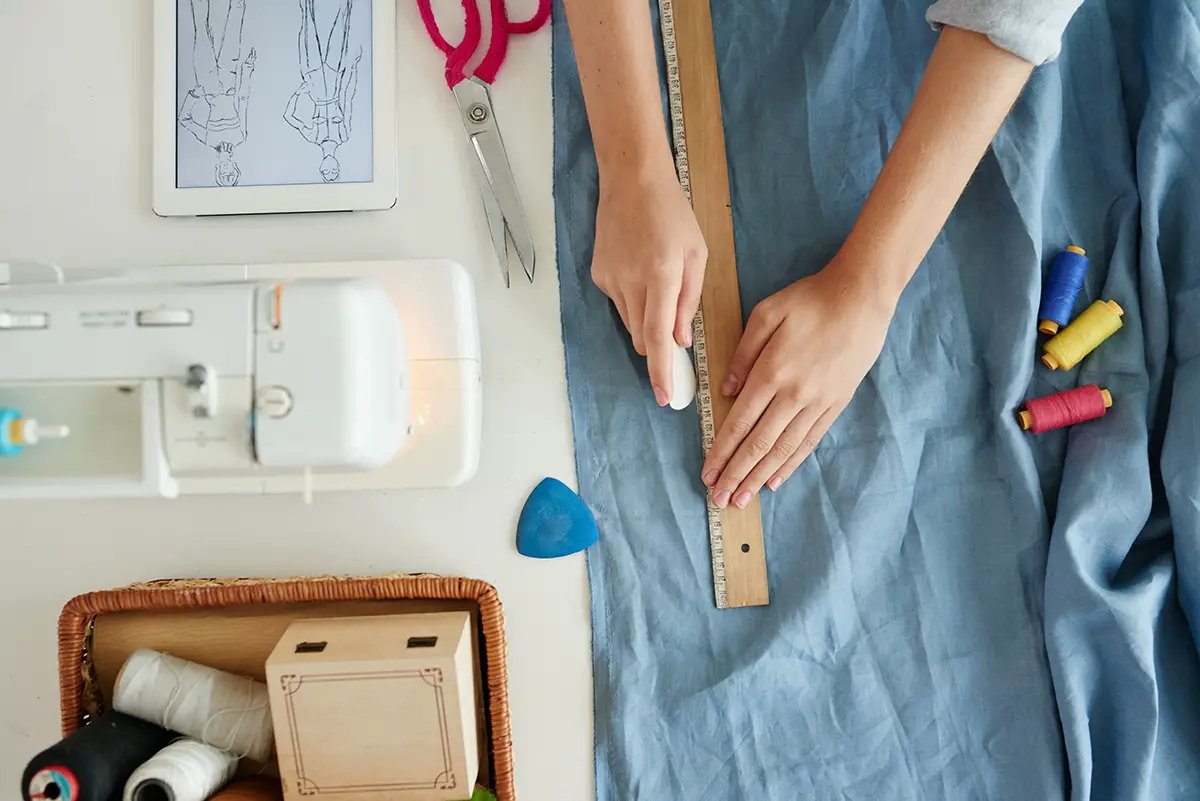Thinking about making your own clothes? Learn the sewing basics with these quick sewing fundamentals. This is all you need to know to get started with your own fashion label!
Making your own clothes is a cheap way of putting together your own wardrobe. However, that doesn’t mean that you can get away without spending anything. There are some essentials that you will have to make sure you have available.
Here is a quick list of the absolute necessities:
- Sewing machine
- Scissors
- Thread (in all the colours you need)
- Pins
- Muslin cloth – the perfect testing material
- A workspace that you can spread out on
- Pen and pad to jot down your ideas and inspiration on
Measure Up
Before you start cutting the fabric or sewing you need to take measurements. In general, clothing measurements are based on the waist and hip numbers. When you are measuring yourself or a friend, always use a linen or fibreglass tape measure like the one in the picture. This is the most flexible type and will ensure a close and accurate measurement.
However, one thing to be wary of is getting everything too exact. Always always always add a couple of inches to each measurement that you take. This allows a comfortable fit and gives the wearer some movement. It’s also far easier to take something in than rework it to accommodate a bigger than expected figure!
How to Measure This is a tricky business but there are some rough rules of thumb that you can follow From top to toe:
Bust – measure the fullest part of the bust and across the fullest part of the back.
Waist – try and measure around your natural waistline. If you are not really sure where this is, the best trick is to place the tape around your waist and let it drop – wherever it lands is where you should take your measurement from.
Hips – hips are a little trickier but if you are 5ft 4inches or under, measure the hips about 7 inches from the waist measurement. Over 5ft 4inches? Measure about 9 inches from the waist. In both cases, the tape should rest over the widest part of the hip and wrap the tape, firmly, all the way around.
Pattern Making Time There are plenty of patterns that you can buy in the shops and online. They act as excellent guides to the novice fashion maker – the instructions are comprehensive and all you have to do is follow the steps.
However, not all of us are blessed with a figure that conforms to these standard patterns. Sometimes it’s easier and quicker to put together your own pattern. This is often a case of trial and error and working out what works best for you. Make sure that your measurements are accurate, allow an inch on each measurement to hems and start sketching out a basic pattern.
Pinning It Down As soon as you have cut out your pattern, you have to pin it to the fabric. You could do this any way you want but there are a couple of rules that seamstresses follow to the letter.
Rule number one is that the pins should always rest in parallel to the cutting line. This is not a rule for the sake of rules – if you rest your pins along the cutting line, it makes cutting easy and allows you to follow the line precisely.
Rule number two relates to the fold. If our pattern has a fold then you must make sure that you pin this line first. Think of your fold as the base and you must start here. If you don’t follow this rule be warned – your piece won’t be as secure and it may not rest correctly on the grain.
Pressing it All into Place Pressing is not a final step. You should get the iron out and press as you go through the dressmaking process. If you do this you will get a professional result and your sewing will be as accurate as possible.
One piece of advice – always press on the interior side of the fabric. You don’t want burn marks or watermarks on the good side!
Summary Making your own clothes is a real skill and one that can bring a huge amount of pleasure. It is like setting up your very own fashion label where you are the creative director. There are lots of rules that you need to follow in sewing and we have outlined some of the basic fundamentals that you need to be aware of. Follow these and you will be off to a great start!

